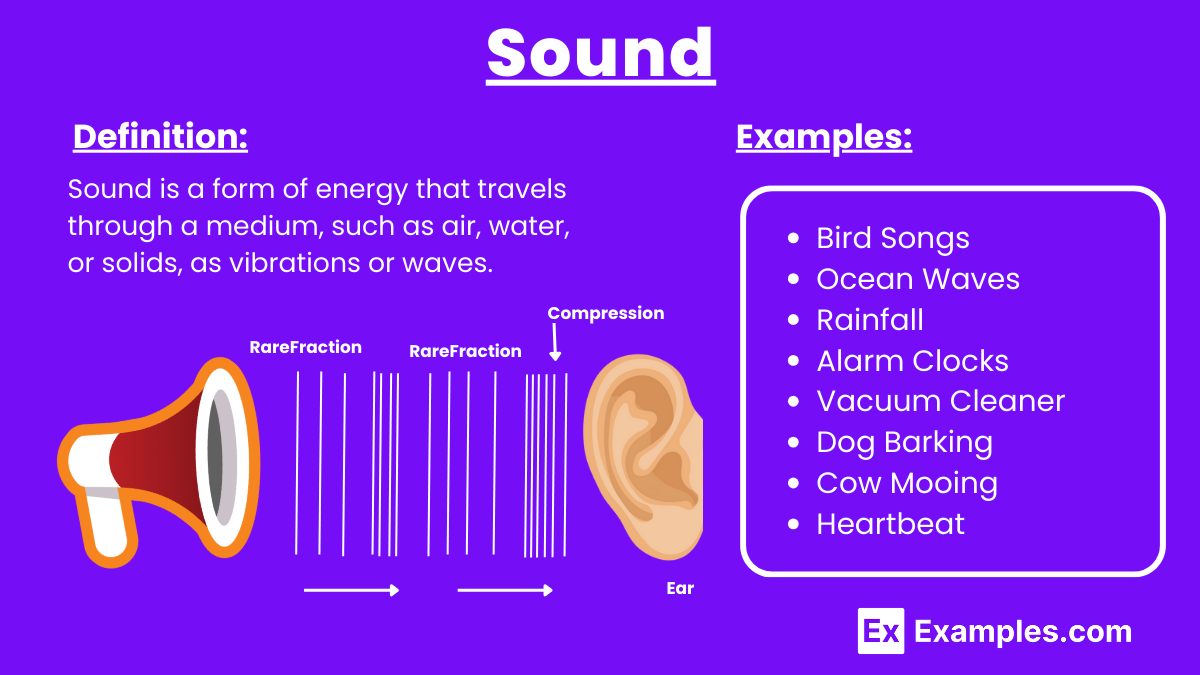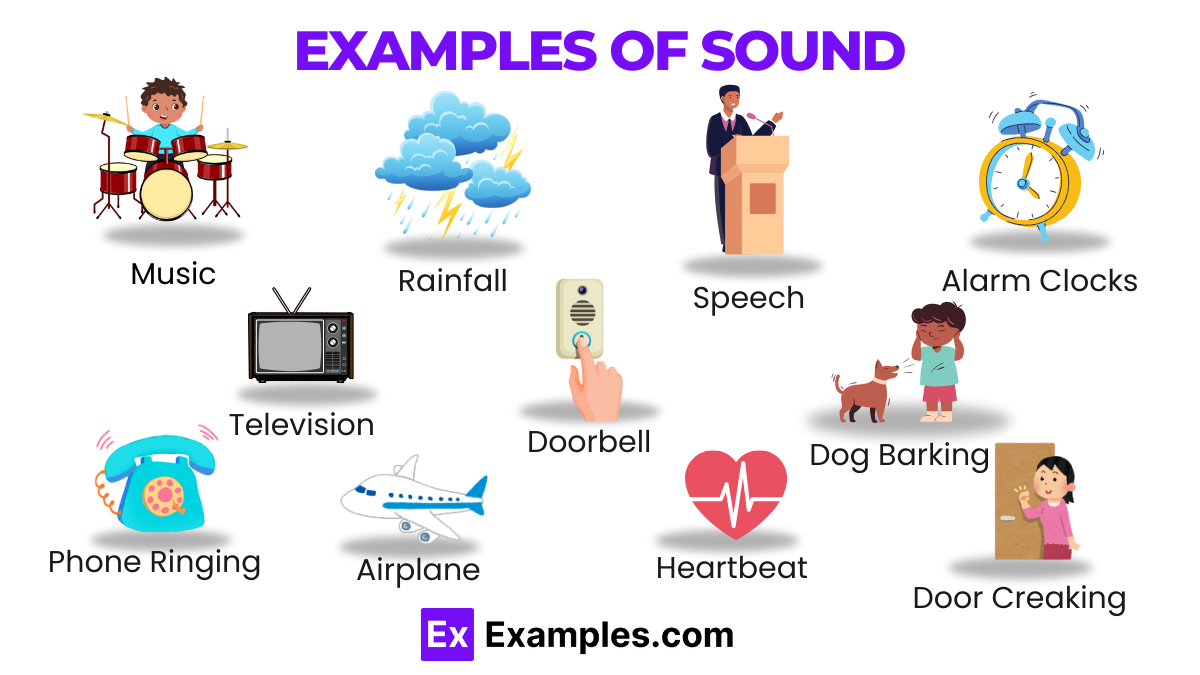What is the primary medium through which sound travels most effectively?
Vacuum
Water
Air
Steel


Sound is a form of energy that travels through a medium, such as air, water, or solids, as vibrations or waves. These vibrations originate from a source and cause the particles in the medium to oscillate, creating pressure waves that can be detected by our ears. The speed and nature of sound waves depend on the medium through which they travel, with sound generally moving faster in solids than in liquids or gases. In the human context, sound is perceived through the auditory system, allowing us to hear and interpret various noises, music, and speech. Sound energy is measured in units of sound such as decibels (dB), which quantify the intensity of the sound. Unlike electrical energy and mechanical energy, which involve the flow of electrons and the movement of objects respectively, sound energy specifically involves the vibration of particles in a medium.
Sound is a form of energy that travels through a medium, such as air, water, or solids, as vibrations or waves. which produce longitudinal waves that the human ear perceives as audible noise or tones; these waves vary in frequency and amplitude, influencing the pitch and loudness of the sound we hear.

The speed of sound is the rate at which sound waves travel through a medium. This speed varies depending on the medium and its properties, such as temperature, density, and elasticity. Here are some key points about the speed of sound:
Sound is produced by vibrating objects, which cause the surrounding medium to vibrate and create sound waves.
A sound wave is a longitudinal wave that travels through a medium, causing particles to compress and rarefy in the direction of the wave.
The speed of sound varies with the medium, approximately 343 meters per second in air at room temperature.
Frequency is the number of vibrations per second of a sound wave, measured in Hertz (Hz), determining the pitch of the sound.
Amplitude is the height of the sound wave, determining the loudness or volume of the sound.
Pitch is the perception of the frequency of a sound, with higher frequencies producing higher pitches and lower frequencies producing lower pitches.
A decibel is a unit used to measure the intensity or loudness of sound, with higher values indicating louder sounds.
Sound waves enter the ear canal, causing the eardrum to vibrate, which is then converted to electrical signals sent to the brain.
Ultrasonic sound refers to sound waves with frequencies above the human hearing range, typically above 20,000 Hz.
Infrasonic sound refers to sound waves with frequencies below the human hearing range, typically below 20 Hz.
Text prompt
Add Tone
10 Examples of Public speaking
20 Examples of Gas lighting
What is the primary medium through which sound travels most effectively?
Vacuum
Water
Air
Steel
Which of the following describes the frequency of a sound wave?
The distance between two crests
The speed at which sound travels
The number of waves that pass a point per second
The height of the wave crests
What is the phenomenon called when sound waves reflect off a surface and return to the listener?
Refraction
Diffraction
Echo
Absorption
What determines the pitch of a sound?
Amplitude
Wavelength
Frequency
Speed
Which characteristic of sound is affected by changes in amplitude?
Pitch
Speed
Loudness
Direction
How does sound travel through different mediums, such as solids, liquids, and gases?
Faster through gases than liquids
Slower through solids than liquids
Faster through solids than liquids
At the same speed through all mediums
What is the term for the bending of sound waves around obstacles or through openings?
Reflection
Refraction
Diffraction
Interference
What happens to sound waves when they pass from air into water?
They speed up
They slow down
Their frequency increases
They are absorbed completely
Which term describes the bouncing back of sound waves from a surface?
Refraction
Reflection
Diffraction
Absorption
What is the effect of increasing the frequency of a sound wave on its pitch?
The pitch becomes lower
The pitch becomes higher
The pitch remains the same
The pitch becomes more variable
Before you leave, take our quick quiz to enhance your learning!

